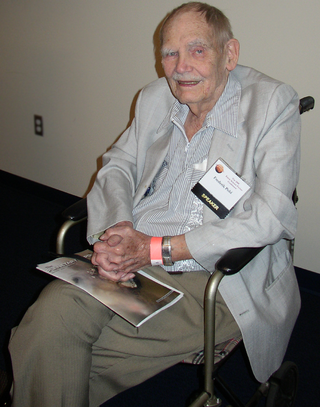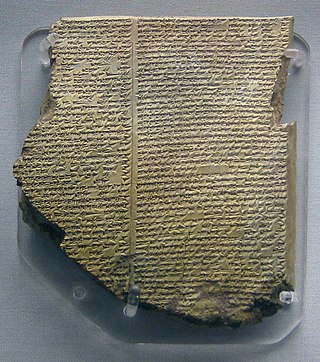Related Research Articles

Frederik George Pohl Jr. was an American science-fiction writer, editor, and fan, with a career spanning nearly 75 years—from his first published work, the 1937 poem "Elegy to a Dead Satellite: Luna", to the 2011 novel All the Lives He Led.

Galaxy Science Fiction was an American digest-size science fiction magazine, published in Boston from 1950 to 1980. It was founded by a French-Italian company, World Editions, which was looking to break into the American market. World Editions hired as editor H. L. Gold, who rapidly made Galaxy the leading science fiction magazine of its time, focusing on stories about social issues rather than technology.

If was an American science fiction magazine launched in March 1952 by Quinn Publications, owned by James L. Quinn.
A brain transplant or whole-body transplant is a procedure in which the brain of one organism is transplanted into the body of another organism. It is a procedure distinct from head transplantation, which involves transferring the entire head to a new body, as opposed to the brain only. Theoretically, a person with complete organ failure could be given a new and functional body while keeping their own personality, memories, and consciousness through such a procedure. Neurosurgeon Robert J. White has grafted the head of a monkey onto the headless body of another monkey. EEG readings showed the brain was later functioning normally. Initially, it was thought to prove that the brain was an immunologically privileged organ, as the host's immune system did not attack it at first, but immunorejection caused the monkey to die after nine days. Brain transplants and similar concepts have also been explored in various forms of science fiction.
A positronic brain is a fictional technological device, originally conceived by science fiction writer Isaac Asimov. It functions as a central processing unit (CPU) for robots, and, in some unspecified way, provides them with a form of consciousness recognizable to humans. When Asimov wrote his first robot stories in 1939 and 1940, the positron was a newly discovered particle, and so the buzz word "positronic" added a scientific connotation to the concept. Asimov's 1942 short story "Runaround" elaborates his fictional Three Laws of Robotics, which are ingrained in the positronic brains of nearly all of his robots.

Dallas McCord "Mack" Reynolds was an American science fiction writer. His pen names included Dallas Ross, Mark Mallory, Clark Collins, Dallas Rose, Guy McCord, Maxine Reynolds, Bob Belmont, and Todd Harding. His work focused on socioeconomic speculation, usually expressed in thought-provoking explorations of utopian societies from a radical, sometime satiric perspective. He was a popular author from the 1950s to the 1970s, especially with readers of science fiction and fantasy magazines.

The Patchwork Girl is a science fiction novel by American writer Larry Niven. Part of his Known Space series, it is the fourth of five Gil Hamilton detective stories and the first to be published as a stand-alone novel in 1980. It was later included in the Gil Hamilton anthology Flatlander.

Inconstant Moon is a science fiction short story collection by American author Larry Niven that was published in 1973. "Inconstant Moon" is also a 1971 short story that is included in the collection. The title refers to "O, swear not by the moon, th' inconstant moon", a quote from the balcony scene in William Shakespeare's Romeo and Juliet. The collection was assembled from the US collections The Shape of Space and All the Myriad Ways.
The 1st World Science Fiction Convention (Worldcon) was held on 2–4 July 1939 in the Caravan Hall in New York City, United States, in conjunction with the New York World's Fair, which was themed as "The World of Tomorrow". It was later retroactively named "NyCon I" by Forrest J Ackerman.

"A Planet Named Shayol" is a science fiction story by American writer Cordwainer Smith. Like most of his science fiction work, it takes place in his Instrumentality of Mankind setting. It was first published in Galaxy Science Fiction magazine in October 1961.

"Scanners Live in Vain" is a science fiction short story by American writer Cordwainer Smith. It was the first story in Smith's Instrumentality of Mankind future history to be published and the first story to appear under the Smith pseudonym. It first appeared in the semi-professional magazine Fantasy Book.

Death by Ecstasy is a science fiction novella by American writer Larry Niven, set in the Known Space universe. It is the first of five Gil Hamilton detective stories, and provides most of the backstory for the character. It first appeared in the January 1969 edition of Galaxy under the title The Organleggers.

Tomorrow and Tomorrow is a 1997 science fiction novel by Charles Sheffield. The book starts in approximately the year 2020 and follows the protracted adventures of Drake Merlin, in his quest to save his wife from a terminal brain disease, over the course of eons. Similar premises are presented in the 2006 film The Fountain, as well as the Isaac Asimov story "The Last Question".

Immortality is a common theme in fiction. The concept has been depicted since the Epic of Gilgamesh, the oldest known work of fiction. Originally appearing in the domain of mythology, it has later become a recurring element in the genres of horror, science fiction, and fantasy. For most of literary history, the dominant perspective has been that the desire for immortality is misguided, albeit strong; among the posited drawbacks are ennui, loneliness, and social stagnation. This view was challenged in the 20th century by writers such as George Bernard Shaw and Roger Zelazny. Immortality is commonly obtained either from supernatural entities or objects such as the Fountain of Youth or through biological or technological means such as brain transplants.
A sense is a biological system used by an organism for sensation, the process of gathering information about the world through the detection of stimuli. Although in some cultures five human senses were traditionally identified as such, many more are now recognized. Senses used by non-human organisms are even greater in variety and number. During sensation, sense organs collect various stimuli for transduction, meaning transformation into a form that can be understood by the brain. Sensation and perception are fundamental to nearly every aspect of an organism's cognition, behavior and thought.

The Science Fiction League was one of the earliest associations formed by science fiction fans. It was created by Hugo Gernsback in February 1934 in the pages of Wonder Stories, an early science fiction pulp magazine. Gernsback was the League's "Executive Secretary", with Charles D. Hornig its "Assistant Secretary". The initial slate of "Executive Directors" included Forrest J. Ackerman, Eando Binder, Jack Darrow, Edmond Hamilton, David H. Keller, P. Schuyler Miller, Clark Ashton Smith, and R. F. Starzl.
Organ transplantation is a common theme in science fiction and horror fiction. Numerous horror movies feature the theme of transplanted body parts that are evil or give supernatural powers, with examples including Body Parts, Hands of a Stranger, and The Eye.
Suspended animation in fiction refers to the temporary cessation of life processes experienced by fictional characters, followed by their subsequent revival. This process is commonly employed as a plot device in science fiction narratives. It is frequently utilized to transport a character from the past to the future or to facilitate interstellar space travel, which necessitates an extended journey for months or years. In addition to accomplishing the character's primary objective in the future, they often encounter the unfamiliarity of a new world, which may bear only faint resemblance to their previous surroundings. On occasion, a character is portrayed as possessing skills or abilities that have become lost to society during their period of suspension, enabling them to assume a heroic role in their new temporal setting.
Przekładaniec is a 1968 short science fiction comedy film directed by Andrzej Wajda based on the screenplay by Stanisław Lem, which was a loose adaptation of Lem's 1955 short story turned into a radio play Czy pan istnieje, Mr. Johns?. The title of the film was variously translated into English as Layer Cake, Hodge Podge, or Roly Poly.

Mr. Freeze, a supervillain in DC Comics and an adversary of the superhero Batman, has been adapted in various forms of media, including films, television series, and video games. The character has been portrayed in film by Arnold Schwarzenegger in Batman & Robin (1997), and in television by George Sanders, Otto Preminger, and Eli Wallach in the 1966 Batman series, and Nathan Darrow in Gotham. Michael Ansara, Clancy Brown, Maurice LaMarche, and others have provided the character's voice in animation and video games.
References
- ↑ Clark, Stephen R. (1995). How to Live Forever. Routledge. ISBN 0-415-12626-6.
- ↑ Science Fiction Citations Database for the Oxford English Dictionary